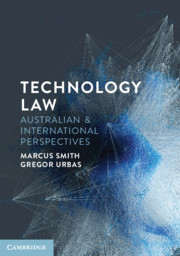Refine search
Actions for selected content:
48585 results in Computer Science
Exploring the Jungle of Intuitionistic Temporal Logics
-
- Journal:
- Theory and Practice of Logic Programming / Volume 21 / Issue 4 / July 2021
- Published online by Cambridge University Press:
- 22 April 2021, pp. 459-492
-
- Article
- Export citation
8 - Ethernet in Automotive System Development
-
- Book:
- Automotive Ethernet
- Published online:
- 06 April 2021
- Print publication:
- 22 April 2021, pp 315-350
-
- Chapter
- Export citation
7 - Protocols for Automotive Ethernet
-
- Book:
- Automotive Ethernet
- Published online:
- 06 April 2021
- Print publication:
- 22 April 2021, pp 247-314
-
- Chapter
- Export citation
4 - The Automotive Environment
-
- Book:
- Automotive Ethernet
- Published online:
- 06 April 2021
- Print publication:
- 22 April 2021, pp 109-133
-
- Chapter
- Export citation
5 - Automotive Physical Layer Technologies
-
- Book:
- Automotive Ethernet
- Published online:
- 06 April 2021
- Print publication:
- 22 April 2021, pp 134-226
-
- Chapter
- Export citation
1 - A Brief History of Ethernet (from a Car Manufacturer’s Perspective)
-
- Book:
- Automotive Ethernet
- Published online:
- 06 April 2021
- Print publication:
- 22 April 2021, pp 1-32
-
- Chapter
- Export citation
Contents
-
- Book:
- Automotive Ethernet
- Published online:
- 06 April 2021
- Print publication:
- 22 April 2021, pp v-viii
-
- Chapter
- Export citation
Preface to the Second Edition
-
- Book:
- Automotive Ethernet
- Published online:
- 06 April 2021
- Print publication:
- 22 April 2021, pp xi-xiv
-
- Chapter
- Export citation

Technology Law
- Australian and International Perspectives
-
- Published online:
- 21 April 2021
- Print publication:
- 08 April 2021
-
- Textbook
- Export citation
THE LATTICE OF SUPER-BELNAP LOGICS
- Part of
-
- Journal:
- The Review of Symbolic Logic / Volume 16 / Issue 1 / March 2023
- Published online by Cambridge University Press:
- 21 April 2021, pp. 114-163
- Print publication:
- March 2023
-
- Article
- Export citation
QUESTIONS IN TWO-DIMENSIONAL LOGIC
- Part of
-
- Journal:
- The Review of Symbolic Logic / Volume 15 / Issue 4 / December 2022
- Published online by Cambridge University Press:
- 20 April 2021, pp. 859-879
- Print publication:
- December 2022
-
- Article
-
- You have access
- Open access
- HTML
- Export citation
DEDUCTIVE CARDINALITY RESULTS AND NUISANCE-LIKE PRINCIPLES
- Part of
-
- Journal:
- The Review of Symbolic Logic / Volume 14 / Issue 3 / September 2021
- Published online by Cambridge University Press:
- 20 April 2021, pp. 592-623
- Print publication:
- September 2021
-
- Article
- Export citation
Search for smart evaders with sweeping agents
-
- Article
-
- You have access
- Open access
- Export citation
Design thinking and computational thinking: a dual process model for addressing design problems
-
- Journal:
- Design Science / Volume 7 / 2021
- Published online by Cambridge University Press:
- 20 April 2021, e8
-
- Article
-
- You have access
- Open access
- HTML
- Export citation
GAMES AND CARDINALITIES IN INQUISITIVE FIRST-ORDER LOGIC
- Part of
-
- Journal:
- The Review of Symbolic Logic / Volume 16 / Issue 1 / March 2023
- Published online by Cambridge University Press:
- 20 April 2021, pp. 241-267
- Print publication:
- March 2023
-
- Article
-
- You have access
- Open access
- HTML
- Export citation
SERVER COORDINATION IN QUEUEING SYSTEMS: WHEN AND HOW?
-
- Journal:
- Probability in the Engineering and Informational Sciences / Volume 36 / Issue 3 / July 2022
- Published online by Cambridge University Press:
- 20 April 2021, pp. 868-922
-
- Article
- Export citation
On Signings and the Well-Founded Semantics
-
- Journal:
- Theory and Practice of Logic Programming / Volume 22 / Issue 1 / January 2022
- Published online by Cambridge University Press:
- 20 April 2021, pp. 115-127
-
- Article
- Export citation
Connectors of smart design and smart systems
-
- Article
-
- You have access
- Open access
- HTML
- Export citation

